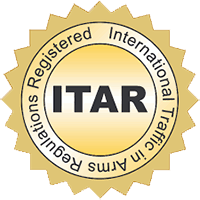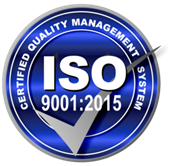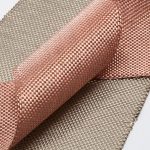
Electrical and Thermal Conductivity of Metals for Electroplating
Thermal conductivity is a critical factor in selecting metals for electroplating applications, as it determines their ability to efficiently dissipate heat and transfer electricity. Metals like silver, copper, gold, are excellent for high thermal conductivity and enable effective heat dissipation, while nickel offers transfer capabilities, conductivity, and EMI Shielding properties. Silver and copper are extremely efficient when it comes to transferring electricity. Gold is also very conductive but the high price and rarity makes it impractical for all but the most specialized uses. Considering the thermal conductivity of metals such as silver, copper, gold, and nickel is essential to optimize plating processes, maintain consistent quality, and prolong the lifespan of plated components.
Metals for Electroplating: Evaluating Silver, Copper, Gold and Nickel
Copper and silver are commonly employed in electrical connectors and circuit boards, though oxidation can be a drawback and must be considered during the engineering and design phase. Gold has a higher price tag than silver and copper. However, it offers excellent corrosion resistance and stability for high-precision electronic components. Nickel, with its high electrical and thermal conductivity, is well-suited for aerospace and defense manufacturing. It offers exceptional corrosion resistance and durability, making it ideal for components exposed to harsh environments.
Tailoring Your Electroplating Project: Metal Recommendations
Selecting the right metal for an electroplating project requires careful consideration of specific requirements and application needs. In the aerospace and defense (A&D) industry, titanium and its alloys are often favored for their lightweight yet durable properties. Electroplating with materials like nickel enhances the conductive qualities and wear resistance of high-performance plastic components. In space exploration, specialized alloys such as tungsten or molybdenum are electroplated to protect components from the extreme temperature fluctuations present in outer space. Gold and gold-platinum alloys are used for reliable electrical contacts in space electronics. For medical device manufacturing, stainless steel is commonly chosen due to its biocompatibility, strength, and corrosion resistance. Electroplating with precious metals like gold or silver improves biocompatibility, provides antimicrobial properties, and enhances the aesthetic appeal of medical implants and surgical instruments.
Electroplating into the Future: Trends in Aerospace and Defense Manufacturing
The aerospace and defense (A&D) manufacturing industry is witnessing notable trends in electroplating. One trend focuses on environmentally friendly processes, with researchers exploring alternative plating solutions that minimize hazardous chemicals and energy consumption.
Other trends involve using advanced plating techniques to metallize high-performance materials such as PEEK and Ultem. Plated coatings on these materials create a “whole is greater than the sum of the parts” paradigm which offers superior performance in A&D environments. Additionally, additive manufacturing or 3D printing is expected to have a significant impact, enabling the production of complex components with tailored properties and functional coatings. Embracing these trends and exploring novel developments holds great potential for enhancing performance, durability, and functionality in the aerospace and defense sectors.
Conclusion
The metals used for any electroplating project will ultimately be determined by the in-the-field requirements for the component being plated. Depending on the application, silver, copper, gold, and nickel are all excellent materials. However, choosing the right metal for the right application must be done with the help of experienced professionals like SAT Plating. SAT Plating can help companies with everything from R&D to high-volume manufacturing and shipping the finished product. Get in touch with our experts today to discuss your project’s requirements and how SAT can help meet specifications. We support programs with volumes as low as 1,000 parts to well over 1 million parts per year.






